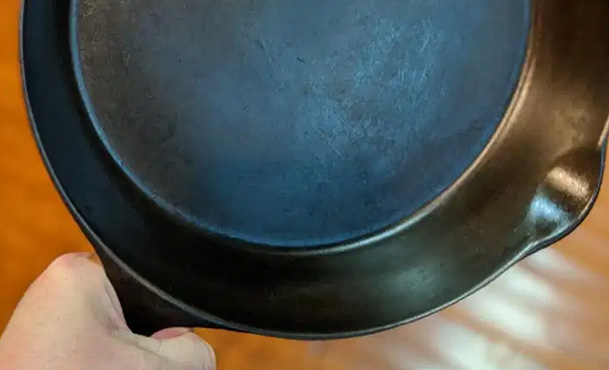
Cast iron cooking can have many ups and downs. Especially during the clean up phase. When I first started to use cast iron, I got annoyed with the food residue that wouldn't come off. I was afraid to use anything to get the residue out. There seemed to be a long list of rules of do's and don'ts that I couldn't keep up with.
After learning the full scope of cast iron care, I became more aware of what I needed to do to maintain cast iron cookware.
The other night I made tacos for the kids. The kids love tacos on Tuesday, but taco Tuesday was moved to Thursday. One child was not thrilled about having tacos on Thursday. It's almost like a ritual to her.
After scooping out the meat, the pan looks very intimidating and gross. The first time I saw this when I cooked in cast iron, I thought I ruined my pan. I didn't know how to clean it because many told me to never use water. Use a rag and "scoop" it out.
Folks, it's o.k. to use water. Trust me.
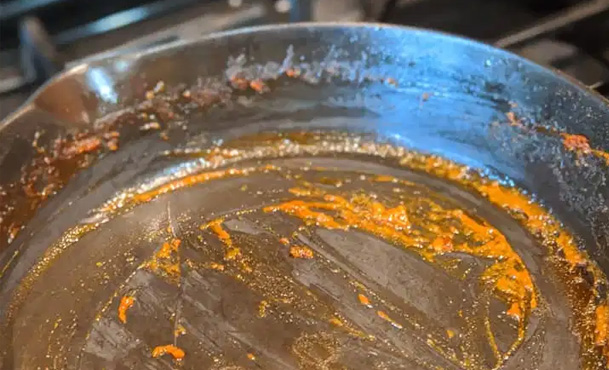
When your pan is completely cooled off, you need to pour water in your pan.
TIP: NEVER POUR COLD WATER IN YOUR PAN WHEN IT'S HOT! THIS WILL CRACK YOUR CAST IRON SKILLET.
Thermal shock is very real with cast iron. You have to allow the pan to cool down before adding water.
It's ok to use soap. Let me say that again. IT'S OK TO USE SOAP! Soap will not eat through your seasoning because the oil used to season your cast iron skillet is no longer an oil. Once the oil goes past the smoke point of the oil, the oil polymerizes. The oil creates a coating, a shield. Which becomes your non-stick cooking surface (seasoning). In the early 1900s soap contained lye. Lye would eat through oil. Today, lye is not used in soap. Soap is ok to use in cast iron.
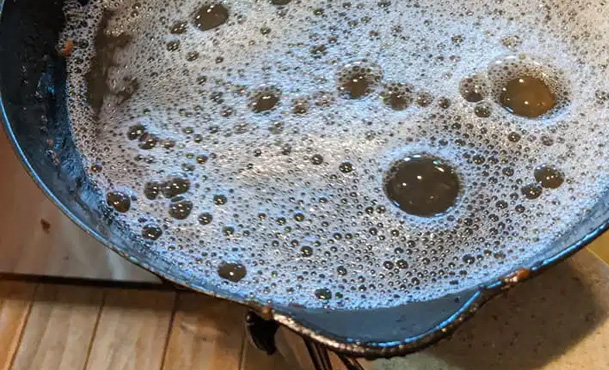
With a brush, I gently scrub the rim of the cast iron. Empty the water out of your cast iron, and run your fingers through the pan to see if you feel any left over food residue in your pan. Especially the inside of the pan's rim. If you still have some spots, it's ok to repeat the same process.
After your pan is completely clean, you will need to dry your pan off completely. You can use a paper towel or a microfiber towel.
This part is usually where people start to freak out. Your pan has a gray tinge. Instantly users feel like their pan is either ruined or the seasoning has washed off. Not realizing there is another step needed to maintain your cast iron pan.
Add oil. You must add one or two drops of oil on to your pan. Once you do this, you need to use a dry paper towel and rub the whole pan down. With an extra paper towel, rub the excess oil off. This will help prevent any sticky spots from standing oil. Standing oil will go rancid and grow mold.
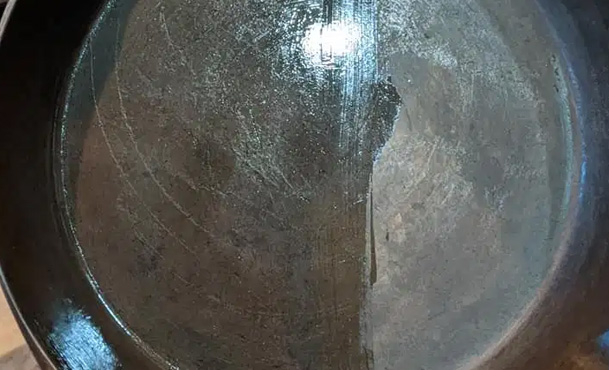
Many people stop there, but other people go a step further to provide a little more nourishment for their cast iron. Each person has their own method.
For me, I go the extra step to maintain my cast iron pan. Either after dinner or in the morning, I add a little morning sizzle. Bacon.
My dog, Dog-Dog, goes crazy over bacon. When he hears me say morning sizzles, he is fast on feet like a soldier being told to "Attention! Salute! Pledge!" But his pledge is more of a whine and bark.
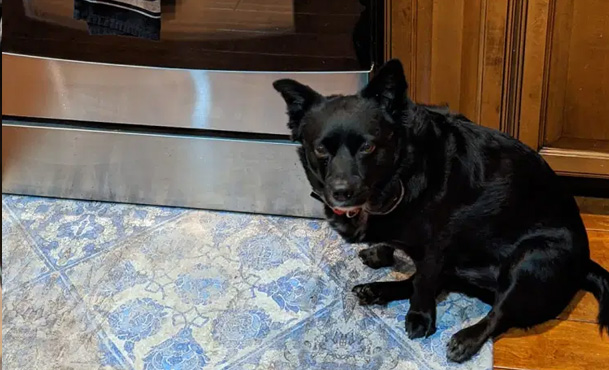
On low heat, place three or four drops of oil on your pan. Never heat your pan on high heat. This will cause the bottom of your pan to pop inward and causes food to stick to your pan. Low or Low to medium heat is all your pan needs because cast iron retains heat easily.
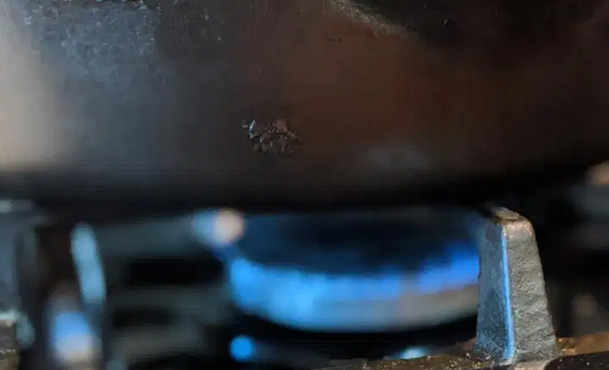
Add your bacon in your pan. Cook according to your favorite consistency. I like mine crisp. Correction. I was voted down in our household. I actually like mine with a little chew. However, my family took me outside and handled the situation accordingly. Just kidding about that part.

After your bacon is fully cooked, pour out your bacon drippings in a container. Never down the sink. This will be an expensive plumbing problem later on. Wipe down your cast iron with a rag. Use another rag to completely dry any standing spots. This video will show you how to properly wipe down your cast iron skillet.

After your pan is seasoned, you NEVER need to re-season your pan ever again. Unless the seasoning is flaking off.
Read our BLOG to learn how to season your cast iron, click here.
These steps will help keep your cast iron in pristine shape, rust-free, and ready to be used.
